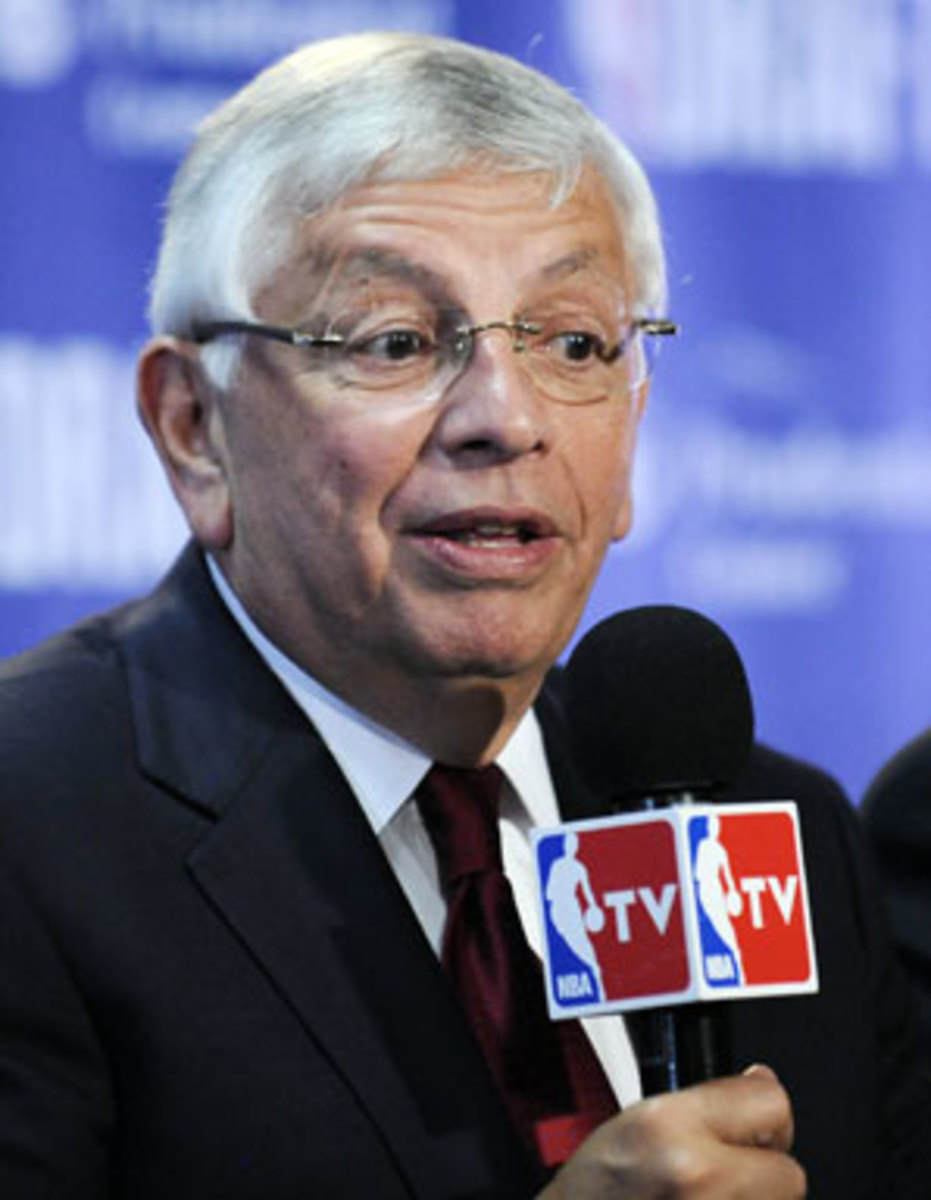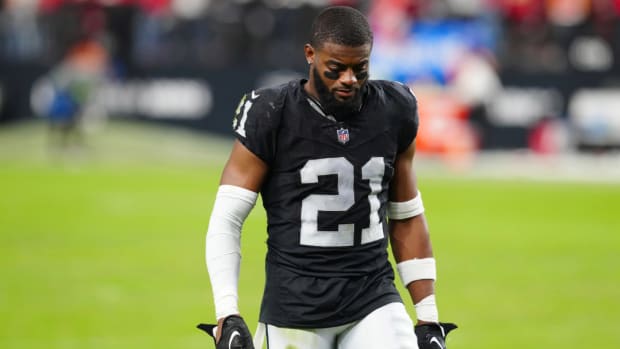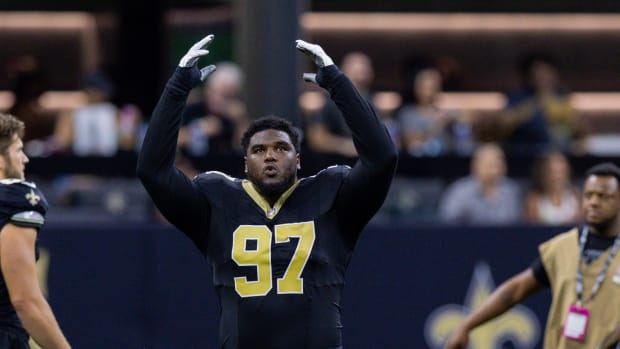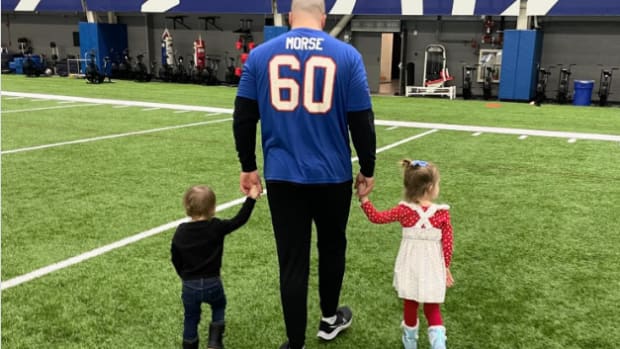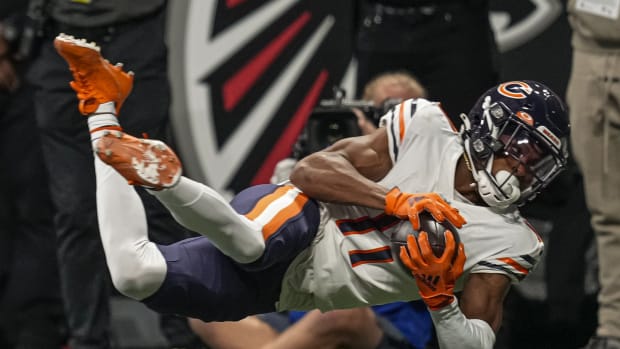Recent NFL ruling could drastically alter NBA's labor strategy
U.S. District Judge Susan Nelson's decision Monday to enjoin the NFL's lockout is a major setback for the league, which had had hoped to use the lockout to force players into agreeing on a new collective bargaining agreement that would substantially reduce players' earning capacity. While the U.S. Court of Appeals for the Eighth Circuit, which will review Judge Nelson's order, may provide renewed life to the lockout, NFL players are now poised to avoid the most onerous concessions.
But Nelson's ruling will affect much more than just NFL; it could also substantially alter the NBA's strategy for negotiating a new collective bargaining agreement with its players when the current CBA expires June 30. While the NBA and its fans are enjoying the playoffs -- with TV ratings off to a record start -- the league cannot gloss over the impact of the recent order. Here are the major questions as the NBA's deadline nears:
Provided the NBA and players' union continue to bargain in good faith after June 30, the terms of their expired agreement would remain in effect. In that scenario, existing salary-cap rules and free-agency restrictions would stay in force, and teams could sign players, hold rookie camps and conduct other typical activities for NBA teams and their players. If the NBA and NBPA are relatively close to a new collective bargaining agreement by June 30, this scenario of continued relations is likely.
The NBA, however, wants substantial concessions from the players. If substantial progress has not been made on a new agreement by June 30, the league is poised to halt operations -- that is, to impose a lockout. The NBA would be motivated to start the lockout on July 1 because, while the timing of payments on players' contracts varies widely, some players are paid in the offseason. If locked out, those players would not be paid, thereby saving teams money. Reducing staff and limiting business operations would also help teams cut costs.
Foremost, the NBA demands a reduction in the percent of Basketball Related Income (BRI) that is paid to players in salaries and other compensation under the collective bargaining agreement. Currently, 57 percent of BRI is paid to players; the NBA reportedly wants players to receive 45 percent. The NBA also seeks a hard salary cap, which would prevent high-spending teams from substantially exceeding the cap through payment of a luxury tax, and fewer guaranteed contracts, which would enable teams to cut disappointing players without an obligation to pay them the remainder of their salaries. These changes would reportedly result in a reduction of NBA salaries by about 30 percent.
At first glance, the NBA's demands seem out of whack with fan popularity in the league. This season alone, it has enjoyed excellent TV ratings and strong ticket sales, along with other signs of financial success.
The league, however, maintains that current sources of revenue are largely tapped out, and that there may not be additional sources of substantial review in the pipeline. Put another way, while the pie of NBA revenue may be considerable, it may not grow much in the coming years or not fast enough to pay salaries of players without owners losing money. The NBA, in fact, says that 22 of the 30 teams will have lost money this season. Assuming such a claim is true and would more or less be true again in 2011-12, most teams would make more by not playing at all next season.
The NBPA does not believe the NBA is losing as much money as it says it is. The union also attributes teams' economic woes primarily to a lack of sharing among big-market and small-market teams -- if teams shared local television revenue, which varies considerably by team, fewer would be in financial trouble, the union claims.
If the NBA imposes a lockout, the players would likely follow the same script as the NFL's union: decertify and then, with several notable players as lead plaintiffs, commence antitrust litigation against the league. The NBA would, in turn, follow the same script as the NFL: file an unfair labor practices charge with the National Labor Relations Board (NLRB) with the hope of preventing the union from decertifying.
According to a report by CBSSports, union chief Billy Hunter has already obtained the requisite number of signatures of NBA players for decertification. Decertification would entail the NBPA notifying the Department of Labor that it has terminated its status as a union and thus no longer represents NBA players. At that time, various restrictions on NBA competition -- the salary cap, the draft, the age limit, etc. -- would become subject to federal antitrust law, which prohibits agreements among competitors (i.e. NBA teams) from limiting competition.
And such competition goes beyond the 82 games of each season. Just look at the draft process: Teams decide that a prospect can be "drafted" by one team and that every other team will not pursue that player. The prospect may not want to play for or live in the city of the team that selects him, and that player can only negotiate with that one team, so he can't get multiple teams bidding for his services. If he doesn't sign with that team, he cannot enter the NBA for at least one year, after which he may be subject to the draft again.
Such anticompetitive agreements are exempt from antitrust law because of the "non-statutory labor exemption." The exemption dictates that when owners and players collectively bargain a rule -- as opposed to the rule being unilaterally imposed by owners -- it is exempt from antitrust scrutiny. Once decertification occurs, however, the labor exemption is taken off the table and the antitrust war begins.
Not necessarily. Here's why:
• Different collective bargaining relationship. For starters, Nelson's decision means that the NFL is enjoined from locking out its players until there is a full trial on the merits. Nelson has not declared that the NFL lockout is illegal, but only that the lockout is likely to be found illegal in a trial and to cause players irreparable harm in the meantime.
Moreover, Nelson's order discusses factors unique to the economic relationship between the NFL and the players. A key factual difference between the NBA and NFL imposing a lockout dates back to 1993, when, as part of settlement, a decertified NFLPA agreed to a notable "disclaimer". Specifically, the NFLPA agreed to recertify, and NFL players agreed to end their antitrust suit against the NFL, in exchange for the league agreeing to waive any right to assert the non-statutory labor exemption, after the expiration of the CBA, on the ground that the player's disclaimer constituted a sham. In other words, the NFL purportedly agreed to not block the NFLPA from decertifying at a later date. The NBA and NBPA have no such disclaimer in their bargaining history. For that reason, a court may be inclined to let the NLRB decide first on an unfair labor charge before any antitrust claims are heard. Tactically, that would give the NBA a huge advantage, since the labor relations board would likely take up to a year to decide the charge and thus a lockout could last an entire season or more before any legal action.
In addition, the collective bargaining agreement between the league and its players does not, as a practical matter, compel immediate decertification. Under the recently expired agreement between the NFL and NFLPA, the players' union had to decertify before the agreement expired or it would have -- per the agreement -- been barred from doing so for six months. The NBA's players' association contains no such clause, so its decision to decertify may come under greater legal scrutiny.
• A preliminary injunction might harm the NBA more than the NFL.
To be sure, Nelson's sweeping language against the NFL lockout should concern NBA owners who are relying on a lockout. But one of four required factors in a trial judge's decision to grant a preliminary junction is the likely harm to be suffered by the enjoined party. Given that not one NFL team could show that it is losing money, Nelson found the possible "harm" to NFL owners by having a 2011 season to be too speculative. In contrast, if the NBA can show that 22 teams are losing money, the harm to NBA owners by having basketball -- and the corresponding payment of player salaries -- would be more credible.
• NBA players may be less able to show irreparable harm caused by a lockout.
Another factor in a trial judge's decision to grant a preliminary injunction is whether the plaintiffs -- be they NFL players or NBA players -- would suffer irreparable harm if the injunction is denied. Irreparable harm refers to a harm that cannot be adequately remedied by money damages.
Nelson, in relying on numerous affidavits, including from such prominent player agents as Neil Cornich and Tom Condon, determined that NFL players would suffer irreparable harm if they missed the 2011 season. During that time, players would age, and given that NFL players are usually in their 20s or early 30s and usually only play a few seasons, missing just one year of football might be akin to the typical person, who normally works decades in his/her lifetime, missing many years of work. Players would also lose out on conditioning and training opportunities. And as Nelson ruled, free agents are hurt even before a missed 2011 season since they cannot sign with teams during a locked out off season. She also found that 2011 rookies would be particularly hurt by a lockout since they would return in 2012 after missing a year of football -- in both the pros and college -- and then be expected to compete with 2012 rookies, who would be fresh off playing in college.
Most of Nelson's logic holds true for NBA players, as well. In fact, to advance her reasoning on irreparable harm, she cited Spencer Haywood's successful antitrust suit against the NBA in 1971. Haywood, one of the best players in the rival American Basketball Association and then a signee of the Seattle SuperSonics, was barred from entering the NBA until four years after his high-school graduation. The NBA's restriction had not been collectively bargained and was thus subject to antitrust law. A court found that he would suffer irreparable harm by missing four years of playing in the NBA.
The presence of alternative employment opportunities in pro basketball, however, could sway a different judge, particularly one who is more inclined than Nelson to favor the league's views. Indeed, if the NBA instituted a lockout, some players would likely seek and obtain comparable employment in Europe and elsewhere. While those leagues impose restrictions on the number of U.S. players allowed on rosters, the restrictions could be changed in the event of the supply of available NBA players suddenly surges on July 1. The NBA would argue that irreparable harm should not be found if players can pursue comparable opportunities elsewhere.
In response, however, NBA players would likely cite the Haywood case: even though Haywood could play professionally in the ABA, a court nonetheless found that he suffered irreparable harm by not being able to play in the NBA. NBA players would probably also charge that playing and living abroad should not constitute an equivalent employment opportunity to playing in the NBA and living in one's home country.
• Nelson won't be the judge.
If NBA players bring an antitrust lawsuit, there's a good chance it would be heard in New York, where both the NBA and the union have head-quarters, and a small chance it would be heard in Minnesota. Therefore, Nelson, who is on the U.S. District Court in Minnesota, would not hear the case. The main reason why she is the judge for Tom Brady et al. v. NFL is that the NFL and NFLPA previously agreed that Judge David Doty, who is on the same court, would hear disputes concerning the NFL-NFLPA collective bargaining relationship. Doty's purview does not include litigation following the end of the collective bargaining relationship. Therefore, he is not hearing the Brady lawsuit. The litigation, however, remains in Minnesota.
Nelson's order would also not be binding on a New York court, or on any court outside of Minnesota. While a judge in another jurisdiction would likely find Nelson's order persuasive, he or she may view the legal arguments in a manner more favorable to the league and perhaps dismiss Nelson as outright wrong. Even if the U.S. Court of Appeals for the Eighth Circuit agrees with Nelson in the NFL's appeal of her order, a court in New York would only be obligated to follow the law of New York and the U.S. Court of Appeals for the Second Circuit, which has jurisdiction over federal courts in New York, and not that of the Eighth Circuit.
Particularly in light of its decisions in Maurice Clarett v. NFL and Daniel Silverman v. MLB, the Second Circuit is generally regarded as favoring the application of labor law to resolve disputes between leagues and players. Such a disposition would work to the NBA's advantage in an antitrust lawsuit brought by NBA players, as the league would be poised to avoid application of antitrust law if a court defers to the NLRB and its labor law expertise.
I am more skeptical of the NBA and NBPA reaching a deal that would save the 2011-12 season than I am of the NFL and its players reaching one to save this upcoming season. While the accuracy of financial numbers and their causes can certainly be argued, it appears that NBA owners are worse off than their NFL counterparts, and their calculus for not having a season is different from that of NFL owners. NBA owners may conclude that it's worth a drawn-out, expensive and risky litigation process over playing a season in which most teams will lose money. Also, differences noted above suggest that Nelson's order in favor of NFL players should not be viewed as automatically forecasting similar success for NBA players, particularly since an antitrust case brought by NBA players would probably be heard in a different federal circuit and before a different judge.
































